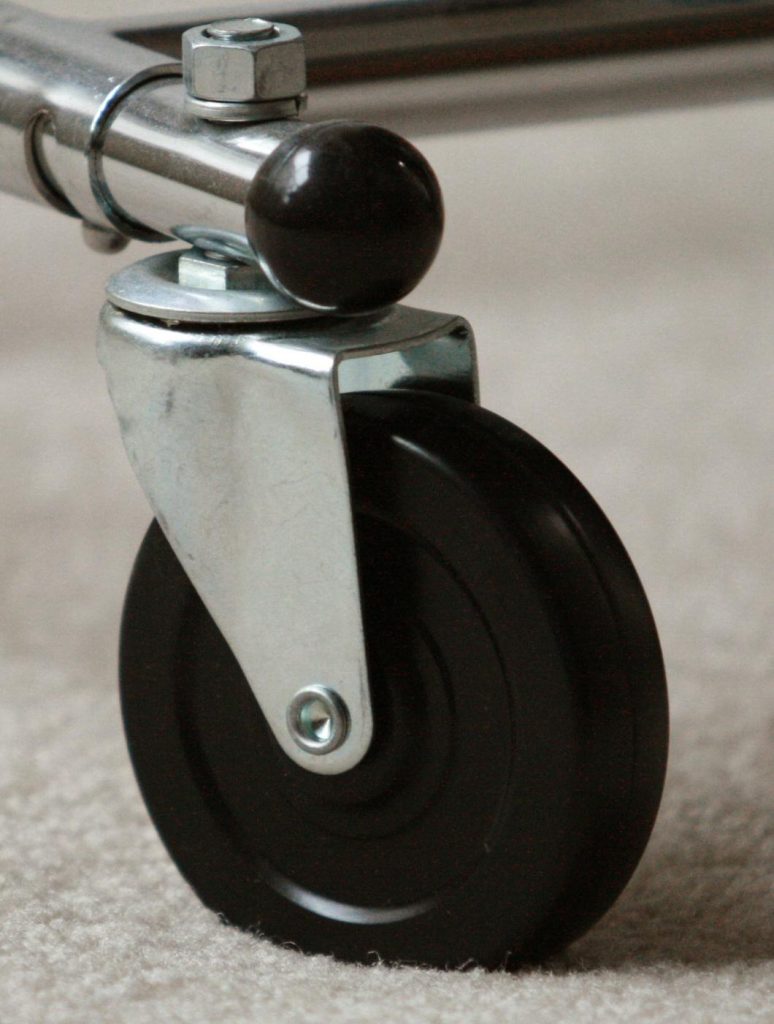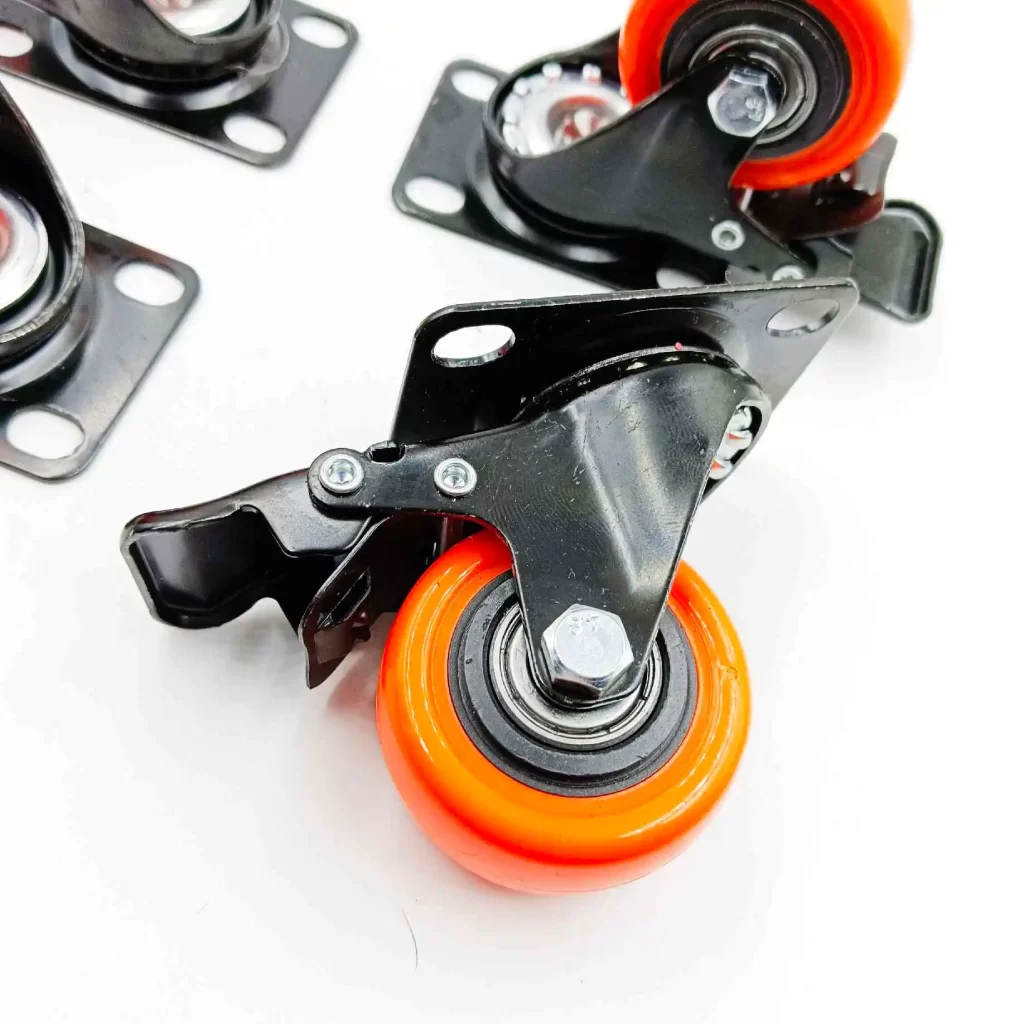When it comes to moving heavy loads or enhancing the maneuverability of everyday items, caster wheels are the unsung heroes. Whether you’re shifting furniture, transporting equipment, or simply looking to make your workspace more efficient, these small yet mighty components play a pivotal role. Let’s dive into what makes caster wheels essential, the types available, and how they simplify tasks in various environments.
What Are Caster Wheels?

Source: wikipedia.org
Caster wheels are a type of wheel assembly designed to attach to the base of objects, enabling easy movement across surfaces. Unlike fixed wheels, casters often have a swiveling mechanism, allowing for multidirectional movement. This adaptability makes them ideal for applications ranging from industrial trolleys to home furniture.
These wheels come in many materials, designs, and sizes, tailored to different needs. Their versatility and ease of installation have made them indispensable in industries such as manufacturing, healthcare, and retail, as well as in homes and workshops.
Types of Caster Wheels
Understanding the types of caster wheels available can help you choose the right one for your specific needs. Here’s a quick rundown:
1. Swivel Casters
These are the most common type of caster wheels. The swiveling mechanism allows the wheel to rotate 360 degrees, providing effortless maneuverability. They’re perfect for situations where quick directional changes are necessary, such as hospital beds or office chairs.
2. Rigid (Fixed) Casters
Rigid casters are designed to move in a straight line. They don’t swivel like their counterparts, making them better suited for applications where controlled, linear movement is required, such as on conveyor systems.
3. Braked Casters
Equipped with a locking mechanism, braked casters are ideal for situations where stability is just as important as mobility. For example, these are commonly used on workbenches or medical equipment to prevent unintended movement.
4. Heavy-Duty Casters
Designed to support substantial weight, heavy-duty casters are often found in industrial settings. They’re built with robust materials like steel or polyurethane to handle loads ranging from hundreds to thousands of kilograms.
5. Specialty Casters
These include wheels designed for specific applications, such as shock-absorbing casters for delicate equipment or heat-resistant casters for use in high-temperature environments.
Common Materials Used in Caster Wheels

Source: bhoomihardware.com
The material of a caster wheel significantly influences its performance. The right material ensures durability, smooth operation, and protection for your floors. Here are some common materials and their benefits:
- Rubber: Quiet and gentle on floors, rubber caster wheels are ideal for homes, schools, and hospitals. They provide good grip and are suitable for uneven surfaces.
- Polyurethane (PU): These wheels combine durability with smooth operation. They’re resistant to wear and tear, making them great for industrial and commercial uses.
- Nylon: Lightweight yet strong, nylon caster wheels are perfect for heavy loads in dry environments.
- Steel: Designed for heavy-duty applications, steel caster wheels excel in harsh conditions, such as factories or warehouses.
- Phenolic Resin: These are ideal for high-temperature environments, as they resist heat and chemicals effectively.
Where Are Caster Wheels Used?
Caster wheels are found in virtually every industry, making them a versatile and practical solution. Here are a few places where they shine:
1. Industrial Settings
Factories and warehouses rely heavily on caster wheels for trolleys, carts, and machinery. Heavy-duty caster wheels ensure smooth transportation of goods and materials, streamlining operations.
2. Healthcare
In hospitals, caster wheels are used in beds, wheelchairs, and medical equipment. Their ability to swivel and lock in place ensures safety and convenience for both patients and staff.
3. Hospitality
Caster wheels are a game-changer for hotels and restaurants. From serving carts to luggage trolleys, they enhance efficiency and mobility, especially in high-traffic areas.
4. Home and Office
At home, caster wheels make furniture easy to rearrange and clean around. Office chairs with caster wheels improve ergonomics and flexibility, boosting productivity.
5. Retail
Shops and supermarkets use caster-equipped shelves, carts, and displays to ensure seamless movement and layout adjustments.
Benefits of Using Caster Wheels
Why are caster wheels such a popular choice? Here are the top benefits:
- Ease of Movement: Caster wheels reduce the effort required to move heavy objects, saving time and energy.
- Floor Protection: Many caster wheels are designed with materials that prevent scratches or damage to flooring.
- Versatility: Available in a range of sizes and materials, caster wheels can be tailored to suit various applications.
- Durability: High-quality caster wheels withstand wear and tear, offering a long service life even under heavy use.
- Improved Safety: Braked casters or heavy-duty options add stability and security, preventing accidents in busy environments.
Choosing the Right Caster Wheels
Selecting the right caster wheels involves considering factors such as:
- Load Capacity: Ensure the wheel can support the combined weight of the object and any additional load.
- Floor Type: Consider whether your floors are smooth, carpeted, or uneven to pick the most compatible wheel material.
- Environmental Conditions: For extreme temperatures or exposure to chemicals, opt for specialty materials like phenolic resin or steel.
- Mobility Needs: Decide whether you need swiveling, fixed, or braked casters depending on your movement requirements.
Maintenance Tips for Caster Wheels
Like any mechanical component, caster wheels require maintenance to stay in top shape. Here’s how you can keep them rolling smoothly:
- Regularly clean the wheels to remove dirt and debris.
- Check for signs of wear, such as flat spots or cracks, and replace damaged wheels promptly.
- Lubricate swivel mechanisms and bearings to ensure smooth rotation.
- Tighten any loose bolts or fittings to maintain stability.
Caster wheels may seem like a small detail, but their impact on functionality and efficiency is massive. Whether you’re outfitting industrial equipment or upgrading furniture at home, these versatile tools make life easier. By choosing the right type and maintaining them properly, you’ll enjoy the benefits of smooth movement and reliable performance for years to come.

